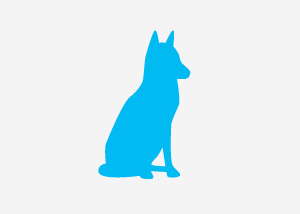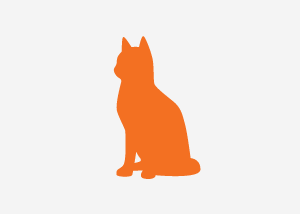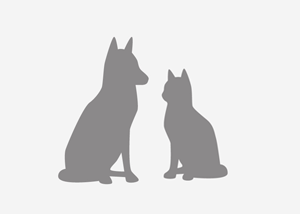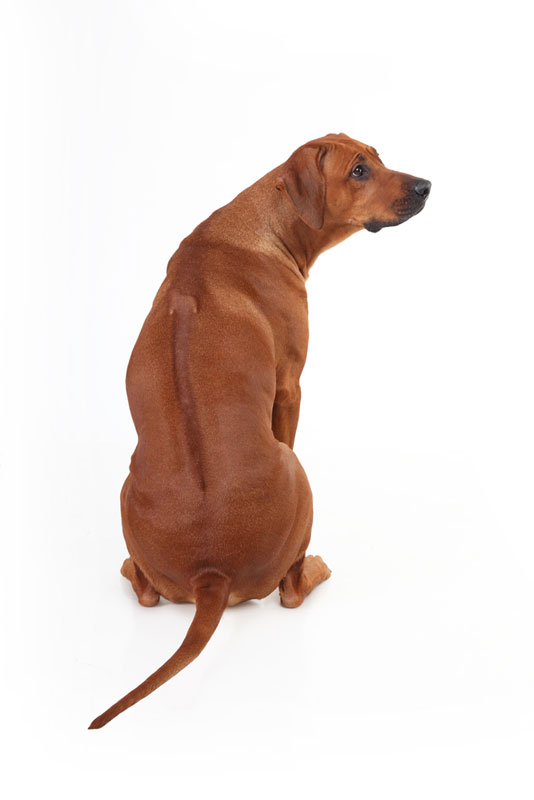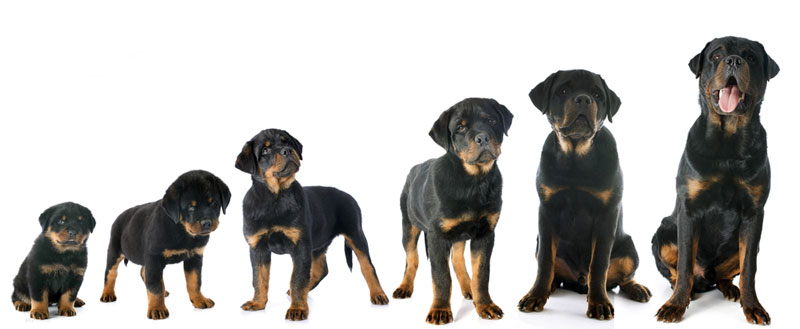Super User
Redbone Coonhound
The Redbone Coonhound is an American breed of dog widely used for hunting bear, raccoon, and cougar. Their agility allows them to be used for hunting from swamplands to mountains and some can be used as water dogs. The American Kennel Club standard says, "The Redbone mingles handsome looks and an even temperament with a confident air and fine hunting talents." This breed has been registered with the United Kennel Club since 1904 and the American Kennel Club since 2009. This is the type of hound featured in the novel Where the Red Fern Grows.
History
In the late 18th century, many European type hunting dogs were imported to America, most of them of Scottish, French, English, and Irish ancestry: the English Foxhound, the Harrier, the Grand Bleu de Gascogne, the Welsh Hound, the beagle, and the Bloodhound were among these. Most often, these dogs were imported so that wealthy planters of the Tidewater region of Virginia could mimic the European gentry and engage in foxhunting, with smaller amounts of dogs winding up on small farms. However, after the American Revolution, as settlement pushed farther West and deeper South, hunters discovered they had a problem: the hounds imported from the late 18th and early 19th century British Isles and France were bred to hunt in different terrain than what was on offer in the American South. By late in the reign of George III much of the original oak forests of England, Scotland, and Ireland had long since been cut down to service the Royal Navy and many of the peat bogs were being mined for use as a source of fuel; with the exceptions of badgers, rabbits, and foxes much of the original fauna that would have inhabited these lands had become extirpated over time. The French aristocracy owned a few private reserves for themselves to hunt in, but typically their dogs could get away with having a colder nose as the amount of land to hunt on was still limited. This was in stark contrast to the American South, which included many hundreds of miles of subtropical bald cypress swamps and hardwood forest . The terrain was loaded with animals that would fight back viciously to the death, like alligators, American black bear, porcupines, cougars or raccoons. When confronted with such conditions the European breeds were almost useless since none of the aforementioned animals burrow into the ground or passively run from trouble: when confronted with prey that climbed a tree or in some cases tried to throw off their pursuers in deep, swampy water, the dogs would mill about pacing below the tree, confused. When confronted with porcupines, they would sometimes even flee when the lead dog was quilled. Over time, Southern hunters would selectively breed dogs that would not back down, had great stamina, and would "hound" their prey until they treed or cornered their exhausted quarry, leading to modern coonhounds. In the late 18th century Scottish immigrants brought with them red colored foxhounds to Georgia, dogs which would be the foundation stock of the Redbone. Later, c. 1840 Irish bred Foxhounds and Bloodhound lines were added to the mix. The name would come from an early breeder, Peter Redbone of Tennessee, though other breeders of note are Mr. Redbone's contemporary, Georgia F.L. Birdsong of Georgia, and the Dr. Thomas Henry in the 19th century. Over time, breeders followed a selective program that led to a coonhound that is more specialized for prey which climbs trees relative to European hunting dogs, was unafraid of taking on large animals, was agile enough to carry on over mountain or in meadow, and liked to swim if necessary. They were ideal for pack hunting of both small and larger prey. Originally, the Redbone had a black saddleback, but by the beginning of the 20th century, they were an uninterrupted red tone.Like many American hunting dogs, especially those from the Deep South, they were widely known and loved by hunters and farmers, but totally unknown in the conformation show ring. Recently, this has changed, and the Redbone has found recognition by the two major American kennel clubs. Unfortunately, for reasons of its main use as a hunting dog rather than a show dog Redbones are extremely rare dogs outside of the United States. There are very few breeders outside of North America of this hound and it is virtually unknown in Europe or Australia.The Redbone Coonhound is also shown in books and films such as "Where the Red Fern Grows." "Where the Red Fern Grows" is a story about a young boy and his coonhounds enjoying life with the hunt. The book is found at many library's across the country and teaches a lifelong lesson about love and friendship.
Resources
Rhodesian Ridgeback
The Rhodesian Ridgeback is a dog breed developed in Southern Africa. Its European forebears can be traced to the early pioneers of the Cape Colony of southern Africa, who crossed their dogs with the semi-domesticated, ridged hunting dogs of the Khoikhoi.In the earlier parts of its history, the Rhodesian Ridgeback has also been known as Van Rooyen's Lion Dog, the African Lion Hound or African Lion Dog—Simba Inja in Northern Ndebele language, Shumba Imbwa in Shona language—because of its ability to keep a lion at bay while awaiting its master to make the kill.The original breed standard was drafted by F.R. Barnes, in Bulawayo,
Southern Rhodesia (now Zimbabwe), in 1922. Based on that of the Dalmatian, the standard was approved by the South African Kennel Union in 1927.
Romanian Mioritic Shepherd Dog
The Romanian Mioritic Shepherd Dog is a large breed of livestock guardian dog that originated in the Carpathian Mountains of Romania.
History
The breed was officially recognized by the FCI on July, 6th, 2005 in Buenos Aires.
Health
The breed has a life expectancy of about 12–14 years.
Rottweiler
The Rottweiler is a large size breed of domestic dog. The dogs were known as " butchers' dogs" because they were used to herding dog livestock and pull Dogcart (dog-drawn) laden with butchered meat and other products to market.The Rottweiler was employed in its traditional roles until the mid-19th century when railways replaced droving for herding livestock to market. While still used in herding, Rottweilers are now used as search and rescue dogs, as guide dogs for the blind, as guard dogs or police dogs, and in other roles.
History
Although a versatile breed used in recent times for many purposes, the Rottweiler is one of the oldest of herding breeds. A multi-faceted herding and stock protection dog, it is capable of working all kinds of livestock under a variety of conditions.The breed's history likely dates to the Roman Empire. It is likely that the Rottweiler is a descendant of ancient Roman drover dogs, a mastiff-type dog that was a dependable, rugged dog with great intelligence and guarding instincts. During their quest to conquer Europe, the Roman legion traveled in large numbers across the continent. The non-existence of refrigeration meant the soldiers had to bring herds of cattle with them on their excursions for food. These drover dogs were not only used to keep the herds of cattle together, but to guard the supply stock at night. Around 74 A.D. the Roman army travelled across the alps and into the southern part of modern day Germany. For the next two centuries the Roman drover dogs were continually utilized in herding and driving cattle for trade even after the Romans were driven out of the area by the Swabians.A town in this region was eventually given the name . The ADRK is recognised worldwide as the home club of the Rottweiler.In 1931 the Rottweiler was officially recognised by the American Kennel Club. In 1936, Rottweilers were exhibited in Britain at Crufts. In 1966, a separate register was opened for the breed. In fact, in the mid-1990s, the popularity of the Rottweiler reached an all-time high with it being the most registered dog by the American Kennel Club.
Health
Rottweilers are a relatively healthy, disease-free breed. As with most large breeds, Hip dysplasia (canine) can be a problem. For this reason the various Rottweiler breed clubs have had x-ray testing regimes in place for many years. Osteochondritis dissecans, a condition affecting the shoulder joints, can also be a problem due to the breed's rapid growth rate. A reputable breeder will have the hips and elbows of all breeding stock x-rayed and read by a recognised specialist, and will have paperwork to prove it.They will also have certificates that their breeding animals do not have entropion or ectropion and that they have full and complete dentition with a scissor bite.As with any breed, hereditary conditions occur in some lines. The Rottweiler is very prone to cancer which is among the most common causes of early death in Rottweilers. For unknown reasons, Rottweilers are more susceptible than other breeds to become infected with parvovirus, a highly contagious and deadly disease of puppies and young dogs. Parvovirus can be easily prevented by following a veterinarian's recommended vaccine protocol.If overfed or under exercised, Rottweilers are prone to obesity. Some of the consequences of obesity can be very serious, including arthritis, breathing difficulties, diabetes, heart failure, reproductive problems, skin disease, reduced resistance to disease and overheating caused by the thick jacket of fat under the skin.Breed surveys in the US, UK and Denmark puts the average lifespan of Rottweilers at 9 to 10 years.
Rough Collie
The Rough Collie (also known as the 'Long-Haired Collie') is a long coated breed of medium to large size dog that in its original form was a type of collie used and bred for herding in Scotland. Originating in the 1800s, it is now well known through the works of author Albert Payson Terhune, and through the Lassie novel, movies, and television shows. There is also a smooth-coated variety; some breed organisations, including both the American and the Canadian Kennel Clubs, consider the smooth-coat and rough-coat dogs to be variations of the same breed. Rough Collies generally come in shades of sable, merles, and tri-coloured. This breed is very similar to the smaller Shetland Sheepdog which is partly descended from the Rough Collie.
History
Both Rough and Smooth collies are descended from a localised variety of herding dog originating in Scotland and Wales. The Scottish variety was a large, strong, aggressive dog, bred to herd highland sheep. The Welsh variety was small and nimble, domesticated and friendly, and also herded goats. When the English saw these dogs at the Birmingham market, they interbred them with their own variety of sheepdogs producing a mixture of short and long haired varieties. After the industrial revolution, dog ownership became fashionable, and these early collies were believed to have been crossed with the Borzoi (Russian Wolfhound) to get a more "noble" head, which is today one of the true characteristics of the Rough Collie. It is not known conclusively if the Borzoi cross made it into the mainstream of the breed.
When Queen Victoria acquired a Rough Collie, after seeing one at Balmoral Castle, they were transformed into something of a fashion item. Continued breeding for show purposes drastically changed the appearance of the dogs; in the 1960s, it was a much taller dog than it is today (in the UK; in the US, the size standard has not been revised downward and dogs have remained between 24-26"). Earlier dogs were also more sturdy in build and reportedly capable of covering up to 100 miles in one day. In the UK the Rough Collie is no longer used for serious herding, having been replaced by the Border Collie. Though in the United States and a number of European countries, there has been a resurgence in the use of the Collie as a working and performance dog.
The Collie Club of America is one of the oldest breed-specific clubs in existence in the United States (founded in 1886). The Collie Club in England dates from 1881.
Quoted from Collie Club of America:
Unfortunately, the Collie's exact origins are shrouded in obscurity. It has been the subject of much research and speculation. The word "Collie" is as obscure as the breed itself. The name has been spelled many different ways: Coll, Colley, Coally and Coaly. Generally, the most accepted origin of the word is "Coll" - the Anglo-Saxon word for "black".
In the 18th century, the Rough Collie's natural home was in the highlands of Scotland, where he had been used for centuries as a sheepdog. The dogs were bred with great care in order to assist their masters in the herding and guarding of their flock.
Without a doubt, it is to the English fancy of the late 1800s that the breed owes its development as a popular show dog. Rough Collies were first exhibited in 1860 at the Birmingham, England dog show, in the generic class "Scotch Sheep-Dogs".
In 1879 the first English Rough Collie was imported to this country. It is from England that we find the famous pillars of the breed, from which the American fanciers sought not only their next big winner, but also their foundation stock.
By the turn of the century, the American Rough Collie was in a state of continued development. The breed continued to flourish in England. American show prizes were dominated by the British imports. As a result of the imports, the breed made rapid progress between 1900 to 1920. These dogs built the foundations upon which the present day Rough Collie is based and paved the way for the emergence of the great American kennels of the 1920s and 1930s
The word may trace to Gaelic or/and Irish - in which the words for "doggie" are, respectively, càilean and cóilean. This would be more consistent with the breed's origin in the Gaelic-speaking Scottish Highlands than an Anglo-Saxon term.
Health
While Rough Collies are generally resilient and healthy, there are some health problems that can affect the breed.
Collie eye anomaly (CEA), a genetic disease which causes improper development of the eye and possible blindness, is a common ailment in the breed. More rarely, Rough Collies can be affected by progressive retinal atrophy (PRA), another genetic disease in which bilateral degeneration of the retina results in progressive vision loss culminating in blindness. Through genetic testing and careful screening program it would be theoretically possible to eradicate both of these problems in purebred lines, however, certainly in the UK, the Kennel Club does not require these tests to be done either for registration or showing. CEA is so prevalent that elimination of affected dogs except through very slow and careful breeding decisions to avoid shrinking the gene pool more than absolutely necessary. Rough Collie puppies should be screened at an early age (6–8 weeks) by a certified veterinary ophthalmologist to check for CEA. PRA has a later onset and can be detected by DNA test, but is much less widespread (in the US) than CEA. (In the UK, PRA is more common.) Note, the UK Kennel Club "Accredited Breeder Scheme" requires eye tests and recommends the genetic test for this class of members.
Canine cyclic neutropenia is a cyclic blood disorder that is usually fatal to affected puppies. The disease is also referred to as "gray collie syndrome", due to affected puppies having a pale gray, pinkish/gray or beige colouring, none of which are normal Rough Collie colours. Puppies that survive through adulthood are plagued with immune disorders throughout their lives and rarely live more than three years. DNA testing can help detect carriers of the recessive gene that causes the disease.
Hip dysplasia: As with most of the larger breeds, hip dysplasia is a potential concern for Rough Collies. Although this disease appears to be "multigene", careful selection by many breeders is reducing this problem. The UK Kennel Club "Accredited Breeder Scheme" requires hip-scores this class of members, however, a very small proportion of UK registered puppies are bred under this scheme. Hip dysplasia is rare in collies compared to their closest relatives and other breeds of the same size.
Rough Collies may carry a mutant Mdr1 gene that results in a sensitivity to Ivermectin and related drugs. A screening test is used to determine if alternative medications are required. Overdoses from the proscribed medications can result in neurological imparement or even death. This faulty gene is present in several breeds, but is well known among collies.
In addition to these problems, all of which can be tested for, there are a number of problems which are thought to be genetic but for which no screening test exists. These include epilepsy, bloat, a tendency towards allergies, and thyroid disorders (primarily hypothyroidism.). Because no DNA tests exist for these disorders (and all can have causes other than genetic origins), breeders can only do their best to avoid producing them by removing affected dogs from the gene pool.
Grooming
The double layered coat needs to be brushed frequently and thoroughly to keep it in a show condition. Pet dogs need less maintenance but still a significant amount. The profuse coat picks up grass seeds and burrs, and many dogs tend to mat to some degree, particularly behind the ears, around the collar (if a collar is left on the dog), and in the pants. Shaving collies is very bad for their skin and some do not regrow any significant amount of hair after being shaved. Spaying and neutering can alter coat texture, making it softer and more prone to matting.
Russell Terrier
The Russell Terrier is a predominantly white working terrier with an insatiable instinct to hunt formidable quarry underground. The breed was derived from the Reverend John Russell's fox working terrier strains that were used in the 19th century for fox hunting. The Reverend's fox working strains were much smaller than the Show Fox Terrier and remained working terriers. The size of the Russell Terrier (10″ to 12″) combined with a small flexible, spannable chest makes it an ideal size to work efficiently underground. Their unique rectangular body shape with the body being of slightly longer length than the leg makes them distinctly different from the Parson Russell Terrier and the JRTCA Jack Russell Terrier.The Russell Terrier originated in England with Australia being designated as the country of development.
History
The name "Jack Russell Terrier" was never used to describe a breed of dog. Rather, it became a common name for any predominantly-white earth-working terrier after the death of the Jack Russell (dog breeder). The only requisite was color, the instinct combined with the will to employ earth-work, and the size to work efficiently underground. Still today, the name is widely used for working terriers of the Parsons Reverend's style. It was in the country of development, Australia, that this 10-12 inch dog was first standardized by Kennel Club recognition with the official name "Jack: Russell Terrier" applied to the breed. This ultimately led to recognition of the breed by FCI (Fédération Cynologique Internationale) countries including Ireland and most recently the USA. Unfortunately, due to the previous use of the name in the USA and England, the name Jack Russell Terrier is conflicting. In the USA, a Terrier conforming to the Australian/FCI standard is simply called a Russell Terrier.The Russell Terrier is a very popular companion breed in the US. First and foremost the breed is a working breed not a companion breed. They are bred by dedicated fanciers to preserve their working functional conformation and the instinct to employ their original purpose as earth terriers. This makes them an excellent performance breed participating in a variety of events; natural hunting which includes earthwork, agility, rally, obedience, tracking, go-to-ground, and conformation, just to name a few. They are also found as therapy and service dogs.
Breed development in England and Australia
In the early 1970s, the Jack Russell Terrier Club of Great Britain was formed, and this body instituted a very primitive form of registration. Soon, Jack Russell Terrier Clubs were being formed worldwide, including Australia. The Jack Russell Terrier Club of Australia was formed in 1972 . This national organization set up a particularly comprehensive registration system, along with a formal breed standard. This club also initiated discussions with their KC regarding the possibility of the breed being accepted for registration as a pure breed. The ideal height for the Jack Russell Terrier in Australia was to be 10″ to 12″.
The Russell Terrier in the U.S.A.
The Russell Terrier, also known as the F.C.I. type Jack Russell Terrier is a recognized Kennel Club breed and is maintained separately from the AKC Parson Russell Terrier, and the UKC Parson Russell Terrier. In 2001, the United Kennel Club accepted the application from the English Jack Russell Terrier Club to give dogs in their registry the official "FS" designation. UKC officially recognized the breed as the Russell Terrier because the name Jack Russell Terrier was already in use for the longer legged dog in 2001. The UKC breed standard was changed in 2005 from the original standard of 2001. In 2009 the UKC changed the name to Jack Russell to go back to their original standard and aligning themselves with the rest of the world . The American Kennel Club American Kennel Club accepted the breed into the FSS Program on December 8, 2004 based on the F.C.I. Jack Russell standard also submitted by the E.J.R.T.C. aka the American Russell Terrier Club . The American Rare Breed Association recognized the "Russell Terrier" in 2003, with the old UKC standard originally written by the UKC. This standard was based on the same standard written by Australia and used also in Ireland. The Australian National Kennel Council recognized the breed in 1990 . The original ARBA standard was then changed by the NRTFC to a new standard and different standard in Nov of 2008, than again on Jan 1, 2010.The AKC parent club for the Russell Terrier changed the F C I breed standard in 2010 and introduced their own standard which is now different from the rest of the world and F C I. The NRTFC was the first and is the only organization in the world and history of the breed, to recognize only the Smooth coated dog and create a history different from the rest of the world.
The FCI Jack Russell Terrier was accepted into the AKC FSS known as the "Russell Terrier" in December 2004 on the application submitted by the ARTC using the FCI standard. The Parson Russell Terrier, Hunt Terrier and the Jack Russell Terrier/Russell Terrier (Australian/FCI JRT) will forever be linked in ancestry. However, after 15 years of maintaining the Russell Terrier in the US and longer internationally as a distinctly separate breed with the selection of the rectangular appearance unique only to the Jack Russell/Russell Terrier they can no longer be considered variations.
More
The breed originated in England and was developed in Australia with a well-documented history. The history of the breed detailed in the standard is as important as the definition of the description of the Russells. The AKC Parson Russell Terrier and the AKC FSS Russell Terrier are maintained as distinctly separate breeds in AKC and in Europe.The American Russell Terrier Club in October 2007 was designated the AKC Parent Club. On January 1, 2010 the AKC Russell Terrier moved forward into the Misc. Class. The AKC FSS books are still open and 2 of the 3 clubs listed on the AKC website are still accepting registrations for the Russell Terrier. The AKC breed standard and other information regarding the breed can be found here:The American Russell Terrier Foundation Club is a recognized Russell Terrier registry for single dog registration for FSS AKC.
Russian Blue
The Russian Blue is a cat breed that has a silver-blue coat. They are very intelligent and playful, but tend to be shy around strangers. They develop close bonds with their human companions and are sought out as pets due to their personalities and coat. Some Russian Blues have a small puff of fur above both of their eyes that slant slightly down to give the appearance that Russian Blues look grouchy.
Russian Spaniel
The Russian Spaniel is a type of spaniel first standardised in 1951 in the Soviet Union after World War II by cross breeding English Cocker Spaniels, English Springer Spaniels and other spaniel breeds. Physically it is similar to a Cocker Spaniel, but has a shorter, tighter coat and a longer body. Developed and used as hunting dogs, this breed does not suffer from any major health complaints other than those normally associated with spaniels. Popular in its native Russia, the breed was only introduced overseas in the 1990s, and is not yet recognised by any major kennel clubs.
Russian tracker
The Russian Tracker or Russian Retriever is an extinct breed of domestic dog. It is uncertain when precisely the breed ceased to exist; it could still be found in the late 1800s. The Tracker was of Asiatic Russian origin. It was used for hundreds of years to protect and herd the flocks of the Indo-Aryan peoples people in the wind-beaten, snow-swept Caucasus Mountains. The Tracker was a large dog, sometimes standing as high as 76.2cm at the shoulder and weighing 45.4kg or more. Despite his seemingly cumbersome proportions, he was fast and flexible enough to chase off wolves and other such predators that threatened his sheep. He wore a thick, taffy colored double-coat that protected him from both the harsh weather and the savage wildlife. Aside from his physical prowess, this mountain dog was also blessed with exceptional intellect. He was so wise and capable (legend says) that he could keep himself and his flock alive and well for months on end with no human help. The breed is related to on some level, and may be synonymous with, the "Yellow Russian Retriever", which measured 71.1cm and 40.8kg. That breed was reputed to be used for tracking wounded deer. however, the Flat-coated Retriever and a few of the Setters are also believed to carry Tracker blood.

